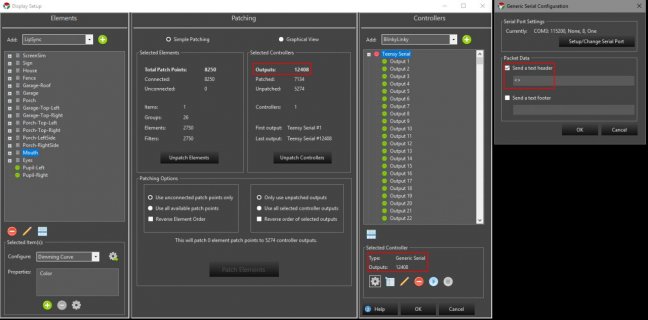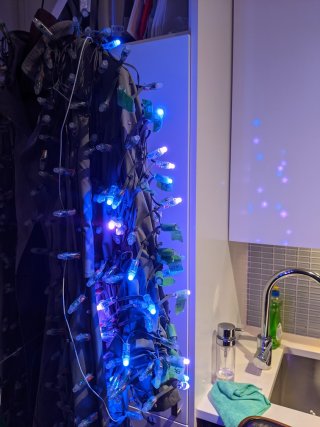Loufe
New member
Hi everybody,
I'm a little out of my technical depth here as I am not sure how to continue my debugging.
I've got xLights creating sequences and 3D mapping my WS2811 lights. The sequence is uploaded to my Pi 4 B running FPP. FPP communicates over USB serial to my teensy 4.1 soldered to an OctoWS2811 board (a MASSIVE thanks to ShadowLight8 for the code and relevant forum points - https://github.com/ShadowLight8/fpp-to-teensy-serial-ws2813 )
It seems as though only the correct channels are being ouput, as I've only programmed the left arm (shown below) and the ethernet plugged in the other port turns off the lights. But they're outputting random, twitching, and wrong colours.
As for debugging, the voltage is stable and not browning out (I've plugged in my old project brains - an arduino uno with raw fastled code) which works like a charm for the arm, displaying perfect. I'm running the data line and ground line directly to the input, bypassing my power bus so I don't feel like the signal is contaminated. I unfortunately don't have an oscilloscope or I'd try to learn that, and I'm not really sure where I'd begin with serial debugging.
I'd really help if anybody could nudge me in the right direction to help me debug this, I'm not asking for charity - I don't mind doing the legwork myself. I'm worried it's somewhere in the hardware so I'm going to buy acetone to wash better where I soldered, but after that I'm out of idea steam.
- I don't mind doing the legwork myself. I'm worried it's somewhere in the hardware so I'm going to buy acetone to wash better where I soldered, but after that I'm out of idea steam.
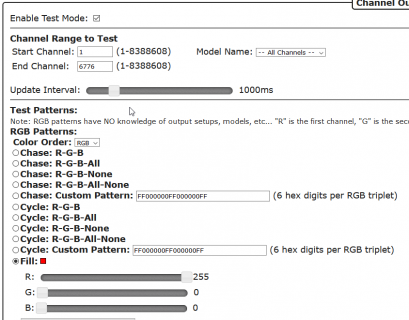

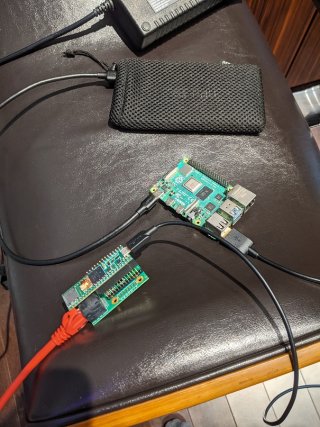
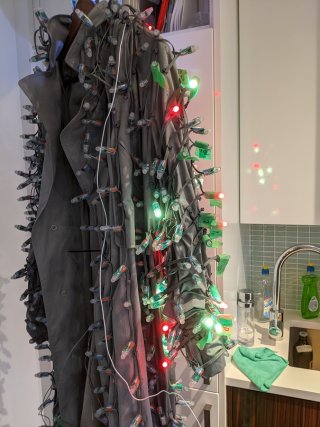

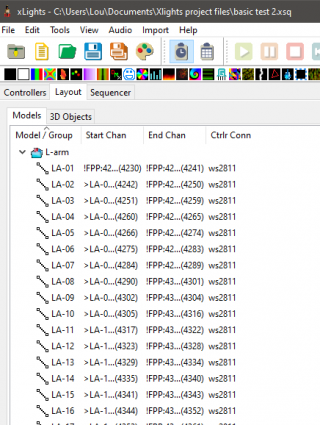
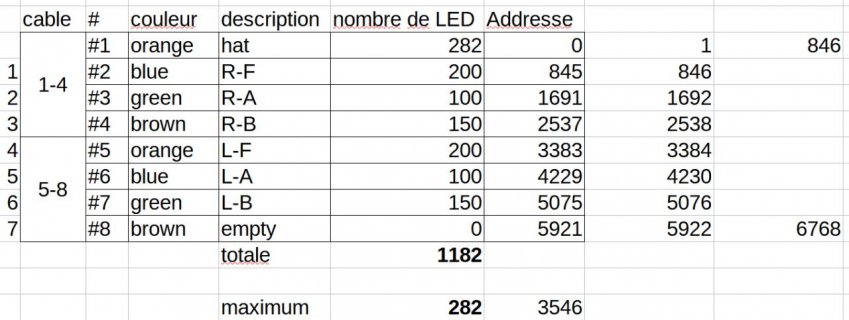
I'm a little out of my technical depth here as I am not sure how to continue my debugging.
I've got xLights creating sequences and 3D mapping my WS2811 lights. The sequence is uploaded to my Pi 4 B running FPP. FPP communicates over USB serial to my teensy 4.1 soldered to an OctoWS2811 board (a MASSIVE thanks to ShadowLight8 for the code and relevant forum points - https://github.com/ShadowLight8/fpp-to-teensy-serial-ws2813 )
It seems as though only the correct channels are being ouput, as I've only programmed the left arm (shown below) and the ethernet plugged in the other port turns off the lights. But they're outputting random, twitching, and wrong colours.
As for debugging, the voltage is stable and not browning out (I've plugged in my old project brains - an arduino uno with raw fastled code) which works like a charm for the arm, displaying perfect. I'm running the data line and ground line directly to the input, bypassing my power bus so I don't feel like the signal is contaminated. I unfortunately don't have an oscilloscope or I'd try to learn that, and I'm not really sure where I'd begin with serial debugging.
I'd really help if anybody could nudge me in the right direction to help me debug this, I'm not asking for charity










